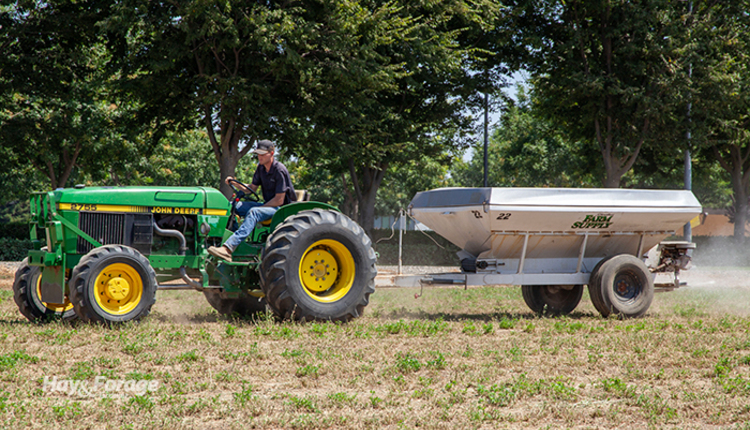Don’t forget the fertilization basics |
| By Amber Friedrichsen, Associate Editor |
|
|
|
The above average temperatures spanning across the central states are likely bringing first hay cutting and grazing start dates to mind. Whether spring soil testing is in order and/or fertilizer application plans are being made, brushing up on the basics of fertilization in hayfields and pastures can help set the tone for the start of the growing season. At the Alfalfa and Stored Forages Conference held in Bowling Green, Ky., earlier this month, Edwin Ritchey discussed the core principles of nutrient management in forage systems. The extension soil specialist with the University of Kentucky began his presentation by stressing the importance of taking a representative soil sample that includes at least 20 soil cores collected at the proper depth. “The first step in a successful soil fertility program is soil testing, and the first step of successful soil testing is soil sampling,” Ritchey asserted. Avoid pulling soil samples in pastures near feeders and waterers, as well as other areas where animals congregate and manure accumulates. And in terms of soil testing frequency, Ritchey suggested the higher the forage removal rate, the more intensive soil sampling must be. For example, a hayfield that is cut multiple times a year should undergo more frequent soil testing, and thus more frequent fertilization, than a pasture where livestock graze and add nutrients back to the system. No matter how often soil is sampled, though, Ritchey emphasized doing so at roughly the same point in the growing season every time. “If you compare a fall sample to a spring sample, there are going to be differences,” he said. “You want to compare apples to apples and make sure you’re looking at the same thing instead of some seasonal variation.” Get the right results After soil sampling is complete, the next step is sending samples to a suitable lab for testing. Ritchey noted different labs use different extractants, depending on the soil conditions in that region. This is because the purpose of soil testing is not to measure the total nutrient content in a particular soil, but rather to assess how available those nutrients will be to plants. For instance, most labs in the state of Kentucky use the Mehlich-3 extractant that was designed to test soil with acidic to neutral pH. The Olsen extractant, on the other hand, was developed for alkaline soils in the West. Bray extractants and ammonium acetate are similar to the Mehlich-3 extractant, but results from these tests must be converted for accurate applications rates. “The differences are generally due to the environment,” Ritchey said. “The Mehlich-3 does not equal the Olsen or the Bray or the ammonium acetate. They are different extractants and they give you different values, and the (fertilizer) recommendations are going to vary.” Once the available nutrients in soil are quantified using an appropriate extractant, these values are correlated to relative crop yield. This allows nutrient concentrations to be calibrated to fertilizer needs; however, there are different approaches to creating recommendations considering sufficient nutrient levels, maintenance rates, and build-up fertilizer. Despite the various philosophies, it is generally accepted that the higher the soil test nutrient value, the less yield response with each additional unit of fertilizer there will be. In other words, maximizing forage yield with greater rates can become less cost-effective, also known as the law of diminishing returns. Ritchey noted that the timing of fertilization depends on the nutrient being added and the purpose of the forage. Overall, he recommended adjusting soil pH in pastures and hayfields before applying fertilizer to ensure the added nutrients are as effective as possible. |

